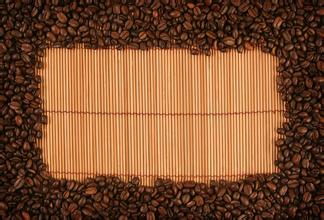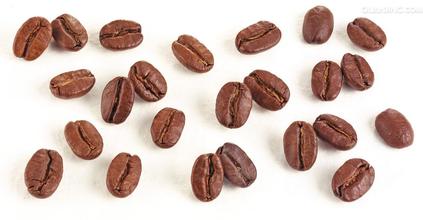Introduction to the characteristics of coffee flavor and taste of Bolivian snow vein manor with rich sour taste
It formed a federation with Peru in 1836 and collapsed as a result of the Chilean invasion in 1839.
In 1863, rich saltpetre deposits were discovered in Atacama province along the Pacific coast. In 1879, Chile sent troops to occupy the mining area, and Bolivia joined forces with Peru to wage the "Pacific War" with Chile. Bolivia was defeated in 1883 and ceded the saltpetre-rich Pacific coast to Chile in 1904. Bolivia lost its only coastal province, including the important port of Antofagasta, and has been a landlocked country ever since. However, Bolivia has always claimed sovereignty over this place and claimed that the 1904 treaty was null and void. [3]
In 1932, the Chaco War broke out between Bolivia and Paraguay for oil resources in the North Chaco region. Bolivia was defeated and lost a large area of territory.
The people's armed uprising broke out in April 1952, and Paz Estenssoro, leader of the nationalist revolutionary movement, became president. Since then, there have been frequent military coups and long-term political instability. In October 1983, a modern bourgeois democracy with South American characteristics was restored.
On December 18, 2005, the presidential election was held. Aymara Indian, Evo Morales, leader of the Bolivian socialist movement, won the election with 53.75% of the vote and took office on January 22, 2006. He became the country's first Native American president and Bolivia's first left-wing president. The construction of the Bolivian state with progressive community socialism (that is, Indian socialism) as the basic value concept began.
On 25 January 2009, the 16th Constitution in the history of the Republic of Bolivia, which was also the first referendum, was adopted by 61.8% of the votes in favour.
On March 26th, Morales signed a supreme decree to change the former name of the Rep ú blica deBolivia into the legal capital of the Plurinational State of Bolivia (El Estado Plurinacional deBolivia), the seat of the Supreme Court, with a population of 284000 and an altitude of 2790 meters. Founded in 1538, the city was formerly known as Chuquisaka. In 1809, the first uprising against Spanish rule broke out in South America. Bolivia declared its independence here in 1825 and became the capital in 1826. In 1839, it was renamed Sucre in honor of the second president of Bolivia, General Antonio Jos é Sucre. In 1898, the central government, presidential palace and parliamentary hall were moved to Russ, and the Supreme Court stayed in Sucre. Sucre has been listed on the UNESCO list of cultural heritage of mankind.
Bolivia is 1/3 of the Andean mountains, rugged terrain, mainly road transport, accounting for more than 85% of transportation. The main railway and road networks are concentrated in the west, and remote areas rely on air communication. But road coverage is the lowest in South America. And there is also the Ronggas Highway, the world's first insurance road known as the "road of death". There is no developed economy here, and it is one of the poorest countries in South America. However, with its beautiful lake scenery and unique scenery of the Andes, the Uyuni Salt Lake, known as the Mirror of the Sky, is a wonder of the world.
We know that Arabica coffee cannot be grown in cold places above 2000 meters above sea level. if the altitude is too high, coffee trees will frost because the temperature is too low. So Bolivian coffee is mainly grown in the Yungas region northeast of La Paz. It borders the Amazon basin and is about 1500-2500 meters above sea level with an average annual temperature of about 10-15 ℃. Therefore, it ensures the suitable temperature for the growth of coffee and protects the coffee plant from frost. In addition, the Bolivian coffee growing area has a distinct dry and wet season and fertile soil, which is a paradise for the development of boutique coffee. Bolivian coffee is usually picked by hand, mostly washed and processed in the early days, the quality of Bolivian coffee is low, the market situation is very poor. Usually the picked coffee fruit is bumped all the way to the processing plant after a simple peeling treatment. Due to the imperfect infrastructure, the traffic is underdeveloped. Coffee farmers have to overcome the rugged mountain road and transport the beans to the higher altitude area of La Paz for washing. If the coffee fruit is not delivered to the processing plant in time, it is easy to ferment and rot on the wet mountain road. As a result, the coffee of good quality has been destroyed.
Bolivia has made a lot of efforts to improve the quality of coffee, stimulate the enthusiasm of coffee farmers and make coffee farmers have a deeper understanding of fine coffee. After the introduction of the COE competition, in the first COE competition held in 2004, there were 13 boutique bean cups with a total score of more than 84 points, and the champion bean score was as high as 90.44 points. In addition, in order to solve the problem of untimely post-processing, a washing treatment plant has also been built in Yanggas area. Let the freshly picked coffee be post-processed as soon as possible to prevent the decline in quality caused by transportation. Coffee farmers are also constantly refining their planting techniques. In short, Bolivia has finally completed a magnificent turn in quality through its own efforts in all aspects.
Bolivia not only has a unique growing environment, but also has an excellent variety of coffee-Typica. In the past two hundred years, the main variety of coffee in Yanggas area is the ancient Tibica. Tibica coffee has a balanced and soft flavor, with lively aroma and rich sour taste. Unfortunately, the low production of Tibika and poor disease resistance have led to low coffee production in Bolivia. There are even fewer opportunities to taste Bolivian coffee. So in order to increase coffee production, Bolivia, like other Central American countries, began to experiment with growing Kaddura and Catuai. Kaddura variety has high yield, high quality, rich sour taste and resistance to leaf rust. Kaduai variety has high yield, strong environmental adaptability and tolerance to diseases and insect pests. Planting these two varieties is expected to increase the yield as much as possible while ensuring the flavor quality.

Important Notice :
前街咖啡 FrontStreet Coffee has moved to new addredd:
FrontStreet Coffee Address: 315,Donghua East Road,GuangZhou
Tel:020 38364473
- Prev

Introduction to the characteristics of Fine Coffee in Fenghuang Manor, Costa Rica
Costa Rica is located in the Central American isthmus, belonging to North America, 10 north latitude, 84 west longitude. It is bordered by the Caribbean Sea to the east and the North Pacific Ocean to the west, with a coastline of 1290 km (212km on the east coast and 1016 km on the west coast). Costa Rica borders Nicaragua in the north (309 km long border) and Panama (639 km long border) south-southeast. Total
- Next

Introduction to the characteristics of the flavor and taste of the moderately mellow coffee manor in Arusha, Tanzania
The eastern coastal areas and inland lowlands of Tanzania have a savanna climate, while the western inland plateau has a tropical mountain climate, with an average temperature of 21-25 ℃ in most areas. More than 20 islands in Zanzibar have a tropical maritime climate, hot and humid all the year round, with an annual average temperature of 26 ℃. [6] rainfall types can be divided into bimodal distribution and unimodal distribution. Areas with double bee distribution of rainfall include
Related
- Does Rose Summer choose Blue, Green or Red? Detailed explanation of Rose Summer Coffee plots and Classification in Panamanian Jade Manor
- What is the difference between the origin, producing area, processing plant, cooperative and manor of coffee beans?
- How fine does the espresso powder fit? how to grind the espresso?
- Sca coffee roasting degree color card coffee roasting degree 8 roasting color values what do you mean?
- The practice of lattes: how to make lattes at home
- Introduction to Indonesian Fine Coffee beans-- Java Coffee producing area of Indonesian Arabica Coffee
- How much will the flavor of light and medium roasted rose summer be expressed? What baking level is rose summer suitable for?
- Introduction to the characteristics of washing, sun-drying or wet-planing coffee commonly used in Mantenin, Indonesia
- Price characteristics of Arabica Coffee Bean Starbucks introduction to Manning Coffee Bean Taste producing area Variety Manor
- What is the authentic Yega flavor? What are the flavor characteristics of the really excellent Yejasuffi coffee beans?

